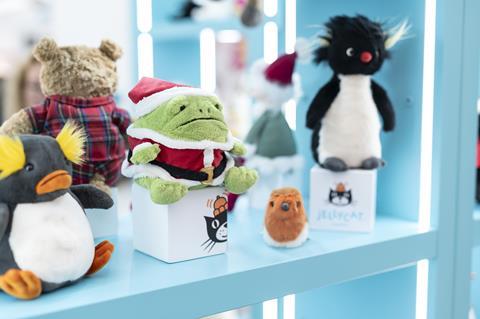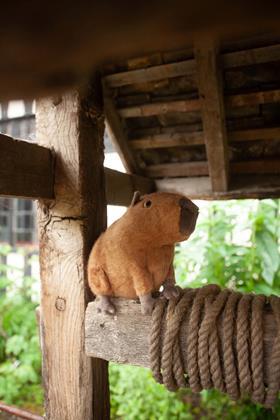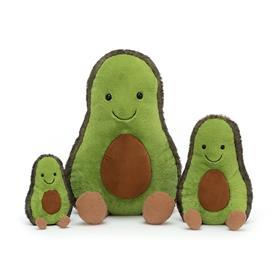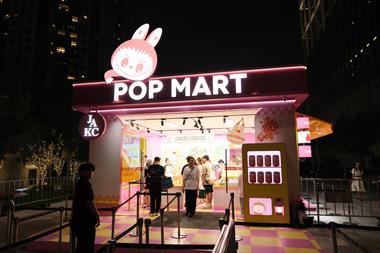What is it about Jellycat that’s causing such a stir? And what does the phenomenon tell us about the shopping habits of Gen Z?

Is there anything more British than fish and chips? Selfridges seems to think not, as earlier this year, it treated visitors on Oxford Street to an immersive chippy experience where shoppers lined up to see their deep-fried order get packed up after a sprinkling of salt & vinegar and, of course, a squeeze of lemon. They even got involved with sprinkling and squeezing themselves, and in most cases paid more than £25 for the chance to do so.
But this wasn’t any ordinary chip shop. In fact, their meal wasn’t even edible, and the people serving them were actors. Yes, we’re of course talking about the Jellycat Chip Shop.
Soft-toy brand Jellycat has exploded in popularity over the last few years, particularly with younger shoppers drawn to their products via social media, and many parents of teenagers may see the brand’s “Amuseables” range crop up on Christmas wish lists this year.
But what is it about Jellycat that’s causing such a stir? And what does it tell us about the shopping habits of Gen Z?
Kidulthood
The primary trend that Jellycat is cashing in on is known as ‘Kidult’, the concept that younger people who have grown up in a permacrisis are drawn to brands that they recognise from their early years, or that have the ability to ‘heal the inner child’.
Selfridges toy buying manager Eleanor Gregory tells Retail Week: “It’s amazing to see how popular Jellycat has become! Their soft designs have always been popular with children, but their quirky new creations have now captured the imagination of Gen Z and Millennials who enjoy the collectability of them as well as gifting to friends.
”Jellycat is now our fastest-selling toy brand and shows no sign of slowing down. The Fish & Chip experience has been more popular than we could have imagined and we are constantly updating our collection with the new designs that our customers love to share across social.”
The department store recorded a 246% increase in Jellycat sales last year and the pink Coffee-to-go Bag it launched exclusively with the brand sold out within days. The retailer told Retail Week that it has another exclusive launch in the works for this year’s festive season, too.
The Similarweb table reveals that the 25-35 age group is the largest demographic that searches for Jellycat online.
According to customer behaviour analysts like Jennifer Von Walderdorff, Jellycat’s success is rooted in their products’ ability to make customers recall joyful or safe memories from childhood, while being shareable and collectible.
Walderdorff said: “This trend is partly driven by young people seeking items that bring emotional warmth or a sense of security.
“There has been a revival of collecting and building collections of collectible items or gifts for children and adults. The collectability factor taps into a “kidult” trend, where adults buy toys either for personal enjoyment or as gifts that can grow with a child.”
The pop-up in Selfridges, as well as a similar ‘Patisserie’ concept it held in Paris’ Galleries Lafayette, were masterstrokes from the brand – going instantly viral and causing a huge spike in traffic to the brand’s website.
According to Similarweb, the experience coincided with a spike of 730,300 in web visits, doubling the statistics from July 2023 and marking the success of the in-store experiences, which are now held all over the world.

Similarweb senior insights analyst Michelle Lang says: “Beyond the official site, Jellycat-related pages on major retailers also saw YoY increases: 17% on Harrods.com, 44% on John Lewis.com, and 75% increase on selfridges.com.
“Jellycats have become more popular as collectibles, thanks to regular product launches, limited-edition releases, and seasonal items.
“Characters like the Capybara, Croissant Keychain, and Birthday Cake—introduced in the past year—are among the most searched and have seen some of the strongest growth.”
Little treats
Another key factor in the brand’s success is its steeper-than-average price point.
Depending on where you look, cuddly toys are usually quite cheap. If you’re in toy shop Hamleys, you can walk away with a perfectly sweet cuddly panda for £14, it’s even cheaper in Ikea where you might spend as little as £3, but a medium-sized panda from Jellycat will set you back more than £30.

And that’s if you can even get a hold of it, as its products are in such high demand that popular lines frequently sell out for months at a time. Take the brand’s sold-out Amuseable Peach – a small plush with an RSP of £23, which regularly sells for more than £50 second-hand on eBay.
This position in the market means Jellycat taps into a phenomenon that’s commonly known as the ‘lipstick effect’ – the concept that during times of financial insecurity consumers seek opportunities to reward themselves with small indulgences, like an extra-posh lipstick, rather than spending on big-ticket items.
Three brands young people are obsessed with right now
Famously more interested in buying avocado toast than getting a mortgage, young consumers are well-acquainted with the ‘little treat’ economy. From scrunchies to hoodies, here are five brands that are capturing Gen Z and Zillennial spend by elevating a well-worn staple to a treat-worthy purchase.
Good Squish
Instagram followers: 47k
Price range: £25-£68
Good Squish has taken the humble hair scrunchie and turned it into a fashion statement. The independent brand uses deadstock fabric to create its colourful oversized pieces, which it sells online and in Selfridges.
Baggu
Instagram followers: 474k
Price range: £10-£38
Young people love tote bags, and it seems many love handing over way more cash than they need to for them too. Baggu’s boldly designed reusable totes, handbags and travel accessories are huge with younger shoppers, and their collaborations with designers and artists regularly push them into new communities and new pools of shoppers.
White Fox
Instagram followers: 2.5m
Price range: £20-£100
Australian clothing brand White Fox has created a viral storm on TikTok and Instagram, featured on the likes of Love Islanders, such as Chloe Burrows and Millie Court. Its most-coveted product are its hoodies, which according to Google reached an all-time search high during Christmas last year and momentum has continued ever since, so expect to see them on lists again for 2024.
While economic uncertainty remains, Gen Z and other young consumers’ penchant for treating themselves is set to stick around too. You can expect to see huge demand for Jellycats and other premium treats endure during this festive season and beyond.


























No comments yet